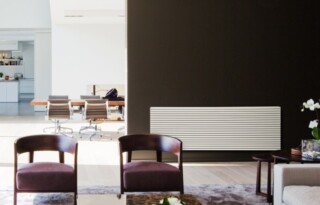The causes of dampness are particularly varied and each problem has a different purposive solution. But there is one recurrent element: too much humidity in the surrounding air, air which is too cold, which in turn makes for condensation, moulding and an unhealthy indoor climate. To counteract this, the combination of heating and ventilation usually helps.
Damp: the heart of the problem
Often without realising, we generate a lot of damp inside the home. Because of everyday activities such as showering, doing the cooking, taking baths, ... the bathroom and the kitchen especially have a high level of dampness. But even just simply breathing may cause damp problems. If the air contains too much moisture, it will condensate on cold surfaces. This in turn may cause moulding, unhealthy air and health problems (such as respiratory problems and allergies to name but two).
The importance of efficient ventilation
Properly aerating your home drives out moist vapours from your bathroom and kitchen, and sees you supplanting the polluted indoor air with fresh outdoor air. You can throw the windows open wide, but a ventilation system does the most efficient job of preventing damp. In fact, for new-build homes the law now requires a ventilation system to be installed.
- Ventilation system C brings in fresh air through grilles fitted in dry spaces. The ‘polluted’ humid air is evacuated through grilles in wet spaces.
- In the case of ventilation system D, the supply of fresh air and the evacuation of spent air is made to occur fully automatically.
Heat sufficiently
Ventilation in itself is not enough though. You also need to sufficiently heat your home to curb problems with damp. A designer radiator sees you killing two birds with one stone: not only are you heating your home efficiently and economically, you are also raising the appeal of your interior. What is more, radiators go hand in hand with underfloor heating.
Ventilation with heat recovery
Ventilation can be perfectly combined with heat recovery. Under normal conditions, a ventilation system brings in cold outdoor air. Thanks to ventilation with heat recovery, the system transfers the heat contained in the extracted indoor air to the intake outdoor air. In doing so, none of the heat is lost and you will find yourself saving on energy.
